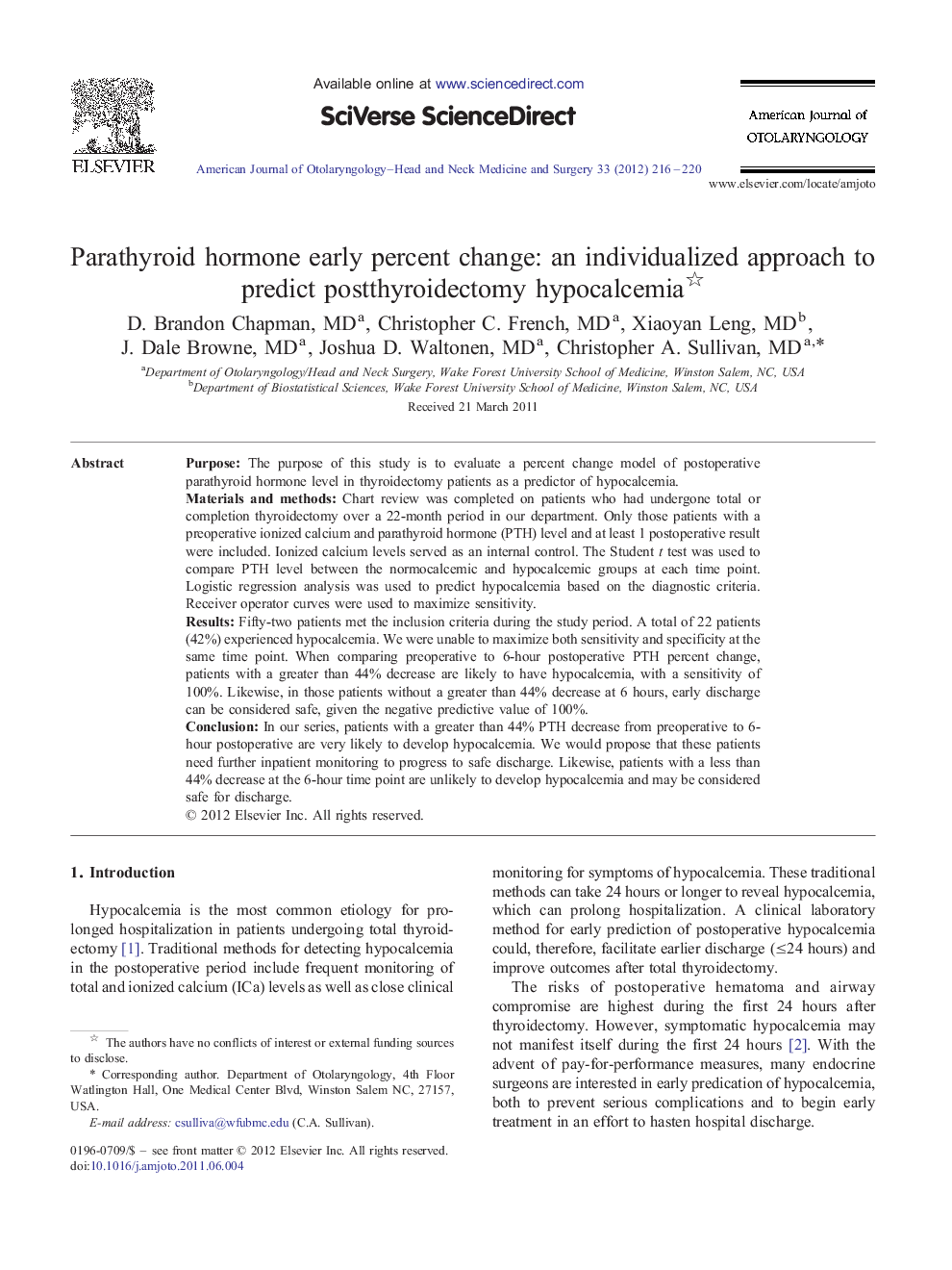| Article ID | Journal | Published Year | Pages | File Type |
|---|---|---|---|---|
| 4103779 | American Journal of Otolaryngology | 2012 | 5 Pages |
PurposeThe purpose of this study is to evaluate a percent change model of postoperative parathyroid hormone level in thyroidectomy patients as a predictor of hypocalcemia.Materials and methodsChart review was completed on patients who had undergone total or completion thyroidectomy over a 22-month period in our department. Only those patients with a preoperative ionized calcium and parathyroid hormone (PTH) level and at least 1 postoperative result were included. Ionized calcium levels served as an internal control. The Student t test was used to compare PTH level between the normocalcemic and hypocalcemic groups at each time point. Logistic regression analysis was used to predict hypocalcemia based on the diagnostic criteria. Receiver operator curves were used to maximize sensitivity.ResultsFifty-two patients met the inclusion criteria during the study period. A total of 22 patients (42%) experienced hypocalcemia. We were unable to maximize both sensitivity and specificity at the same time point. When comparing preoperative to 6-hour postoperative PTH percent change, patients with a greater than 44% decrease are likely to have hypocalcemia, with a sensitivity of 100%. Likewise, in those patients without a greater than 44% decrease at 6 hours, early discharge can be considered safe, given the negative predictive value of 100%.ConclusionIn our series, patients with a greater than 44% PTH decrease from preoperative to 6-hour postoperative are very likely to develop hypocalcemia. We would propose that these patients need further inpatient monitoring to progress to safe discharge. Likewise, patients with a less than 44% decrease at the 6-hour time point are unlikely to develop hypocalcemia and may be considered safe for discharge.
